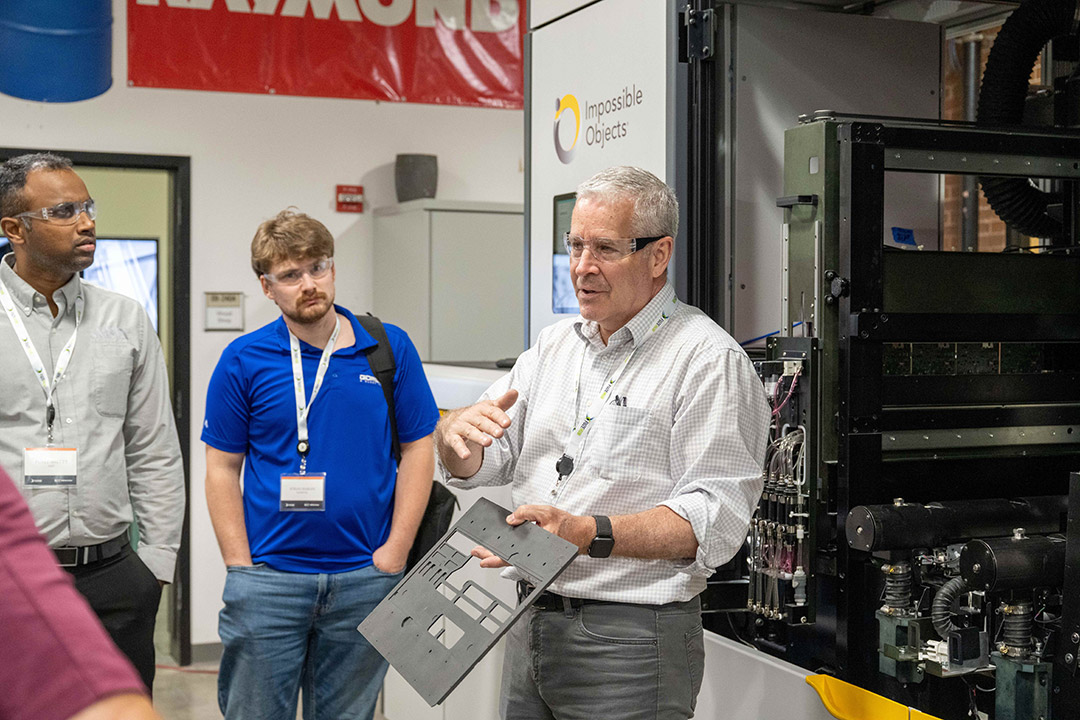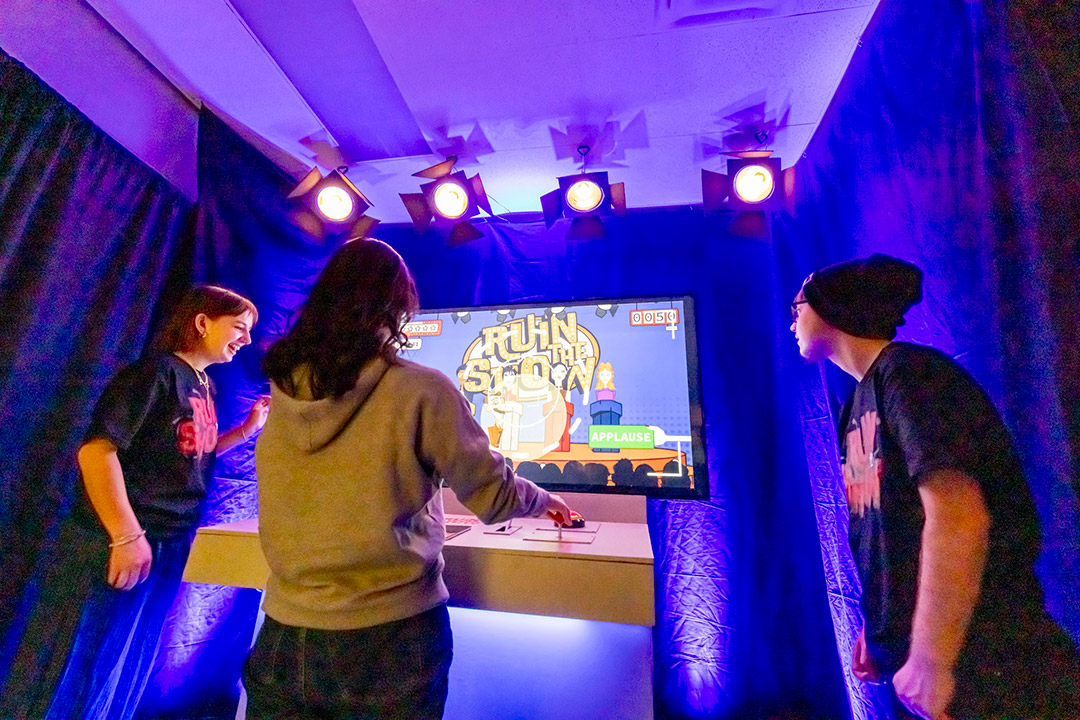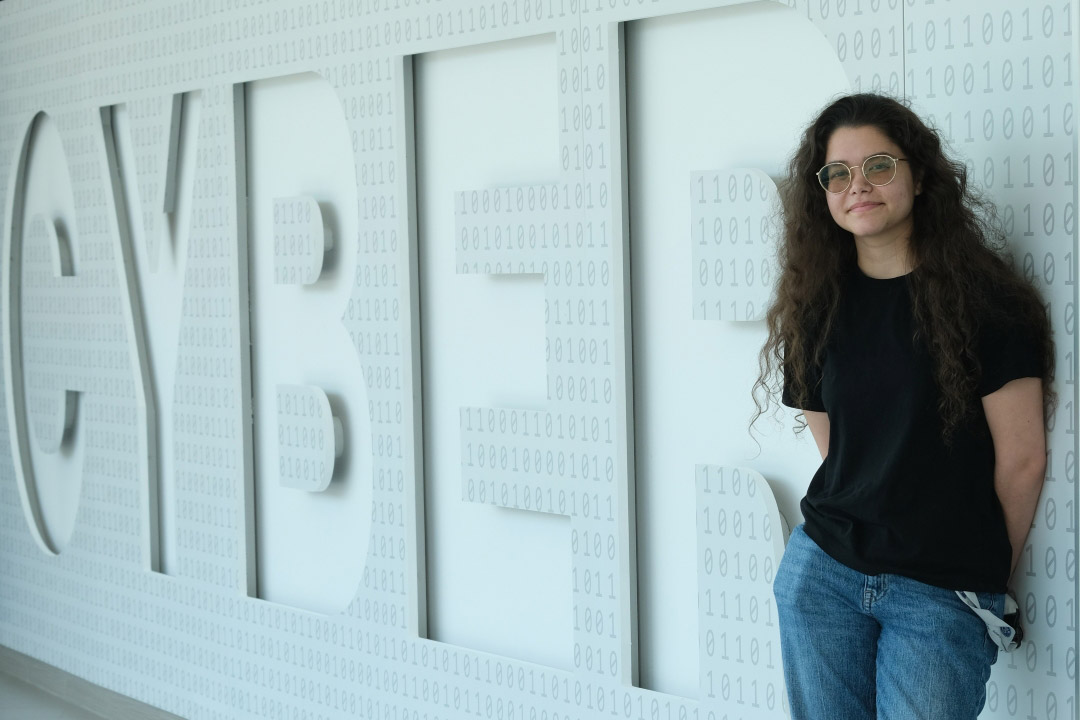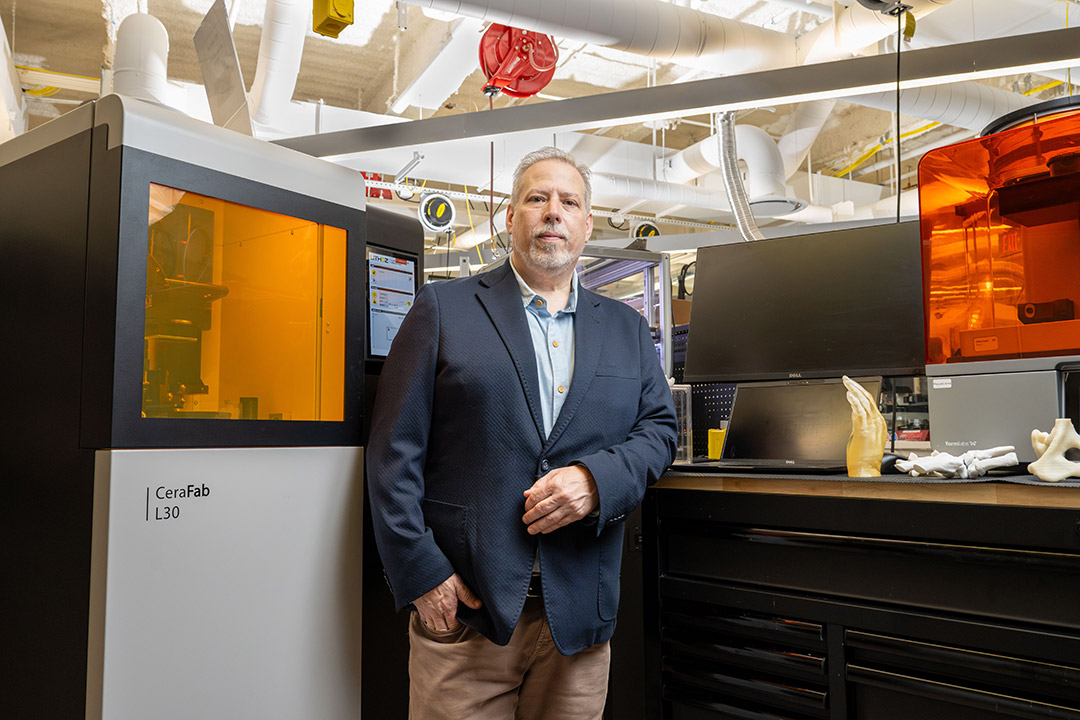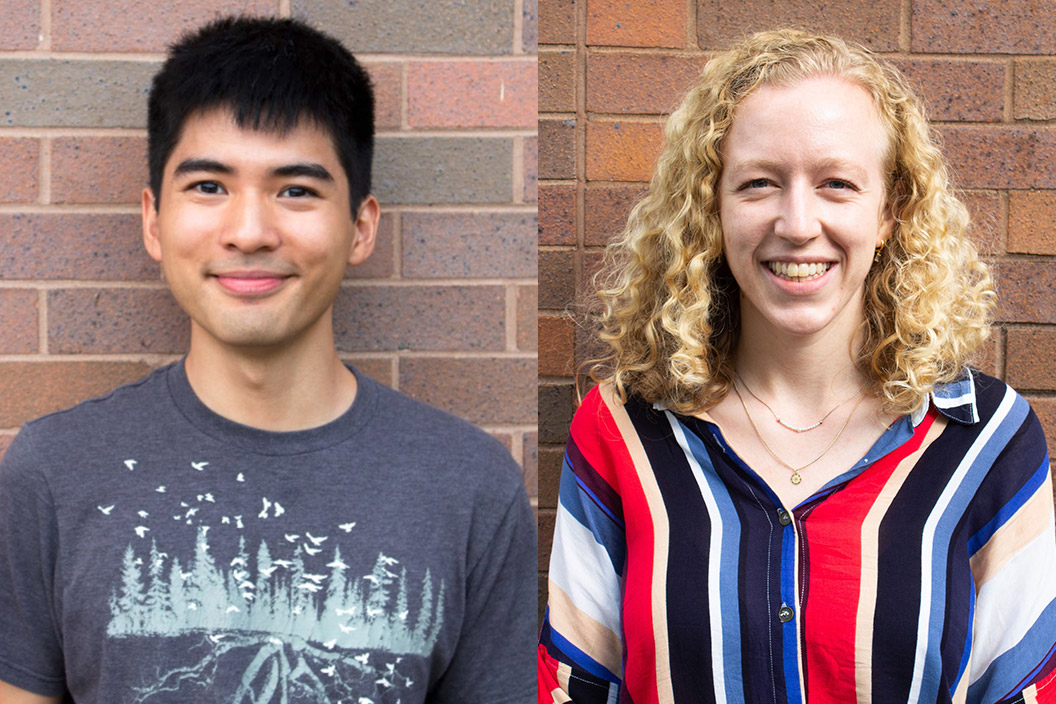State renews AMPrint Center’s contract to continue advancing 3D-printing technologies
RIT’s AMPrint Center recently received a 10-year renewal contract from New York state to continue development of next-generation 3D-printing processes, materials, and applications. The renewal funding will be distributed in two five-year increments, and the first allotment of $5 million will be used beginning this fiscal year.
The AMPrint Center was established in 2015 to help position New York state as a global leader in 3D-printing technologies through industry, government, and academic partnerships.
New start-ups have matured in the state through AMPrint’s research, training, and support capabilities. Its team has also contributed technology to improve how high-performance materials, including metals and carbon fiber composites, are being used in 3D-printing applications, said Denis Cormier, director of the AMPrint Center.
“The AMPrint Center is helping to breathe new life into this region’s world-renowned printing industry by applying its expertise to the rapidly growing 3D-printing universe,” said Cormier, the Earl W. Brinkman Professor of Industrial and Systems Engineering in RIT’s Kate Gleason College of Engineering.
The center has an extensive range of high-tech 3D-printing equipment being used for research as well as hands-on educational and training resources for students, faculty-researchers, and corporate partners.
According to Wohlers’ Associates, the global report on 3D printing and additive manufacturing stated that the industry grew from $5.1 billion in 2015 to nearly $22 billion in 2024.
This renewal grant is a result of the integral work provided by AMPrint: to support and launch start-up companies and to help existing companies successfully adopt industrial grade 3D-printing and additive manufacturing technologies in real-world applications. For example, AMPrint is helping Rochester-based 3D printer company Impossible Objects develop a machine that produces ultra-strong and lightweight carbon fiber composite components.
Impossible Objects recently installed what it refers to as the world’s fastest 3D printer, the CBAM-25 machine, in the AMPrint Center. The new printer becomes another in a series of high-end, high-tech—and very fast—3D printer assets at the university, and multiple funded projects are already underway at the AMPrint Center using this new carbon composite 3D printer.
“There’s an acute need for high-speed 3D printers that can produce very strong, very light weight components for drones and other applications,” Cormier explained.
Additional applications include the development of custom-made carrier boards for the soldering process used to make electronic circuit boards. With the newer, faster printing process, Impossible Objects’ capabilities reduce both time and cost to production.
“This is a ground-breaking piece of industrial manufacturing equipment,” said Cormier. “If you visualize a digital printing press making magazines or newspapers, the paper is just flying through the machine. Now translate that into 3D printing; that is what Impossible Objects has done. They are using carbon fiber instead of paper. There isn’t any 3D-printing technology that touches this machine's print speed, while simultaneously making such high strength parts.”
Beyond speed and strength, AMPrint has also been leading the development of a 3D printer that operates like an inkjet printer in which the ink is molten metal. Cormier recently received a $3 million Future Manufacturing Research grant from the National Science Foundation to bring this technology closer to commercialization. Specifically, the team is scaling up the speed of this printing technology and is also expanding the types of molten metals that it can print. They expect to see it in commercial use within the next five years.
“I’m biased of course, but I believe that this metal 3D-printing technology has the potential to transform the way many metal parts are made. Instead of mass-producing parts that are shipped halfway across the world for storage in huge warehouses, it will be possible to locally print metal parts on-demand just before they are needed,” said Cormier.
On campus, several 3D-printing classes are available for undergraduate and graduate students using the AMPrint Center's broad range of equipment to ensure there is a pipeline of skilled engineers that can incorporate 3D-printing technology into varied industries.
These classes range from Introduction to 3D Printing and Personalized 3D Printing to Metal and Composite 3D Printing. Students are learning about 3D printing processes and applications through coursework, research projects, and internships with the AMPrint Center's industry partners.
Companies can also use any of the different industrial-grade machines or provide prototype devices for testing before commercialization. The AMPrint Center is involved in a diverse range of other industry and government funding projects.
A collaboration between RIT and Alfred University is underway to develop a novel technique for 3D-printing glass structures that can go from ultra-low to ultra-high temperatures without cracking or breaking. With co-principal investigator Scott Williams, professor in RIT’s College of Chemistry and Materials Science, the team will collaborate to develop new silica gel binder components with higher density and mechanical properties. This aspect will improve how glass structures are produced and used for applications such as high technology optics.
Latest All News
- RIT cited as a top university for career outcomes by The Princeton ReviewRochester Institute of Technology once again made The Princeton Review “Best Colleges” list, recognized for its career outcomes for its students and superior game design programs in the Best 391 Colleges 2026 edition. Although specific rankings are not assigned in many categories, RIT does rank No. 6 for its undergraduate game design and development programs. Among other categories RIT was highly ranked: “Best Northeast” (a separate ranking by region and for colleges considered academically outstanding); “Colleges that Create Futures” (colleges that empower students to discover practical applications for their talents and interests through experiences that complement classes and coursework); and “Green Colleges” (colleges that emphasize sustainability in practice). This year’s profile details information about RIT’s co-op program—one of the country’s oldest and largest programs that regularly turns out career-ready students. The university culture was praised by students: “This is where students are able to create what their minds generate. It’s like a teenager’s dream” and “RIT has a culture for everybody.” Since 1992, the guide highlights the best in undergraduate academics. It features only about 15 percent of all U.S. four-year colleges and universities and uses survey information and comments from students to assess rankings with a focus on categories important to prospective students and families. The range of comments and high marks were in categories from campus life and academic programs to admissions and financial aid. The Princeton Review is one of several national and international rankings received by RIT.
- Student incubator provides space for aspiring entrepreneursZevez Zalay, a third-year finance and marketing student, has long been fascinated with the idea of community. After spending a day searching for a local spoken-word poetry group in Rochester, Zalay worked to envision a platform that offers a different experience. Zalay and their business partner, third-year software engineering student Nathan Jackson, are the creators of GroupSoup, a social engagement platform that brings people together for recurring meetups hosted at local businesses. The goal is to foster organic, authentic community building while helping small businesses increase foot traffic and gain customer insights. Pete Schuck/RIT From left, Nathan Jackson and Zevez Zalay present GroupSoup, a marketplace platform that helps drive foot traffic to local businesses, during Demo Night of the Bernard Kozel StartUP Program @ Saunders. “There’s no convenient catalog for people looking to organize meetups unless you’re willing to cold message businesses on Facebook or send out emails, which is a tedious process,” Zalay said. “We want to connect people who want to build community with businesses that want to bring people through the door.” The Bernard Kozel StartUP Program @ Saunders is helping student teams like GroupSoup turn innovative ideas into the beginnings of tangible businesses. As the program concludes its first cohort as a newly established program under the Saunders College of Business, named in honor of Bernard Kozel – well respected for his roles as a businessman and entrepreneur, innovator, investor, and connector. Eight student-led companies are reaping the rewards of a unique support system designed to help them thrive. Pathways for student entrepreneurship are not new to RIT. This program was originally founded in 2011 by professor Richard DeMartino and the late Rich Notargiacomo, former director of RIT’s Venture Creations business incubator, and later run by director Anthony Testa and Evan Vershay under the RIT Student Accelerator name until its rebranding in early 2025. In all, 167 teams and 479 students have participated across the last 23 cohorts. The effort is made possible by many benefactors, including support from the Bernard Kozel Endowed Fund for Innovation and Entrepreneurship. The program, open to all RIT students, is a 12-week immersive summer experience, offering guidance, hands-on learning, and networking opportunities for the student teams. The teams invest into their projects full-time and are given an honorarium to help build their ideas and meet at least twice a week as a group. They have alternative sessions with coaches, who have decades of business experience, and guest speakers from the world of business and leadership. The program culminates with Demo Night, where the teams showcase their business ideas in front of friends, family, and potential investors. One such venture is Endo Automation, which was supported through the Sarah Ramsey Strong Fund, and founded by graduate software engineering students Devaj Mody and Shridhar Vilas Shinde, and Lex Baker, a second-year computer science major. Their solution to a critical modern farming issue: a low-cost, AI-enabled drip irrigation system that uses soil moisture and rainfall sensors to optimize water usage. “We noticed the issues with farmers across the board, especially those in more arid regions in India and the United States,” said Mody. “Water shortages, loss of crops, and the expense to run a farm are all barriers for them. We basically decided to design a system that's able to carry out irrigation at a fraction of the cost, with all the benefits that the farmer would have.” The Endo Automation team designed and perfected their system in Rochester over the summer. The product is already gaining traction. The team has planned deployments this month at four farms in India, including a large vineyard. They’re also eyeing applications to World Bank initiatives for agricultural innovation. Provided The 23rd cohort of the Bernard Kozel StartUP Program @ Saunders was led by program director Anthony Testa, front, second from right, along with support by, from front left, coaches Steve Brookstein and Richard Condon, the 2025 Bernard Kozel Mentor of the Year. Along with GroupSoup and Endo Automation, this summer’s teams included: CYPER, an affordable cybersecurity assessment platform for small-to-medium businesses; ModuCore, a company which creates personalized organizers geared toward lifestyle artisans; Bone Bros, a semi-custom shoe brand bridging the gap between modern footwear and foot health; CollegeGO, an affordable one-stop shop for students and parents to simplify the college application experience; OpenSeek, an education and employment platform for early career UX designers; and Obscura, a breakthrough technology which prevents AI theft of art. A major addition to this summer’s format was the introduction of co-op students, provided with support from Saunders College, who were embedded into the startup teams. “That was a great experience,” said Baker. “It was a different look into managing others who may not have a stake or equity in the company like the three of us. We had to learn how to manage those different expectations, which was great to learn.” “The co-ops added a new dynamic,” added Testa. “Integrating any group of people into a process is not without hard work. The Kozel teams are learning entrepreneurship, but they're also learning how to be leaders and managers on the fly, which is really cool in this safe space.” Throughout the 12 weeks, the teams also formed a tight-knit community. They supported each other regularly through impromptu design feedback and help troubleshooting customer discovery hurdles. One example is through the OpenSeek team, who helped teams like Endo Automation with UI/UX work. A shared Discord group allowed the students to stay connected and share resources in real-time. “This was definitely one of the more connected groups we have had,” added Vershay. It's always encouraged by Anthony and me, but at the end of the day it's on them to really make it happen and connect with each other. They were great about that this year.” The 2025 cohort marked a turning point for the program. It drew a record number of applicants—24 in total—allowing staff to accept the most committed and promising eight groups. “We had alumni and long-time supporters telling us this was the strongest cohort they’d ever seen,” Testa said. “These students came ready.” Applications for the 24th cohort in the summer of 2026 are open on a rolling basis. Interested student teams are encouraged to apply early and reach out for guidance.
- Cybersecurity student Emery Rios awarded Norman Miles academic excellence awardWhen cybersecurity student Emery Rios got an email about winning an RIT award, they immediately thought it was suspicious. Luckily, after a bit of investigation, Rios was able to confirm that the email was not a phishing attack. Rios, a combined accelerated cybersecurity BS/MS student, was selected for the Norman A. Miles Award for Academic Excellence in Study for the 2025-2026 academic year. The award is given to a student who began their studies as a first-year student at RIT and is entering their final year of undergraduate study with the highest grade point average across the university. Recommendations from deans are also considered. Provided Yin Pan, professor in the Department of Cybersecurity, was selected by Emery Rios for the Norman A. Miles Award for Academic Excellence in Teaching. A second component of the award allows the student to recognize a faculty member who contributed to their success at RIT. Rios selected Yin Pan, professor in the Department of Cybersecurity, for the Norman A. Miles Award for Academic Excellence in Teaching. “Professor Pan is so caring, understanding, and truly wants students to succeed,” said Rios. “She is really deserving of this award for the impact she has made on every student, not just me.” Rios chose to attend RIT after finding a love for cybersecurity through a special program in high school. They were also a big fan of Penelope Garcia, the technical analyst on the TV show Criminal Minds. “Digital forensics can be like a crime scene investigation, but doing it on a device,” said Rios, who is from Waldorf, Md. At RIT, Rios enjoyed taking a class in social engineering—where they got to complete a tailgating assessment—and working on a USB baiting attack field experiment that was later published at a cybersecurity conference. As a third-year, Rios took an advanced computer forensics course with Pan. “Emery stood out right away, always asking insightful questions and an enthusiasm to learn new things,” said Pan. For a group project in Pan’s class, Rios worked on a forensic analysis for open source cloud technology. They completed an overview of existing tools, identified limitations, and studied how to modify tools to fit in cloud forensics. “I gave them a 100,” said Pan. “That is very unusual, but I couldn’t pick out anything unsatisfactory.” Rios has since become a teaching assistant (TA) for two of Pan’s computer forensics courses. As a TA, they grade assignments and host open office hours to help other students with technical questions. During the summer, Rios did a cybersecurity co-op with Dick’s Sporting Goods, at the Security Operations Center near Pittsburgh. Outside of class, Rios enjoys being a Resident Advisor and was a Performing Arts Scholar for acting. They are also president of RIT Cosplay Troupe, which meets weekly and holds events and performances throughout the year. Rios is known for cosplaying Dungeons & Dragons characters. As part of the Norman Miles award, Rios is earning a scholarship and Pan will receive funds to support faculty professional development activities. Pan plans to use the money to attend an interesting conference or to support research. She hopes to get a laptop for students who are interested in studying how features in the newest Microsoft Windows system impact forensic analysis.
- Ph.D. student’s NASA-funded research leads to new insight on exoplanetsLike many Ph.D. students, Attila Varga’s professional pursuits include being a lead author on a published paper. But, getting his research featured on the front page of NASA’s website and in news outlets around the world is definitely a bonus. Varga, an astrophysical sciences and technology Ph.D. candidate at RIT, is proud of his research that has led to new understanding about a newborn exoplanet that is shrinking due to the harsh X-rays of its nearby host star. Named TOI 1227 b, the planet is the second youngest ever to be observed passing in front of its host star. While previous estimations put the planet’s age at 11 million years, Varga’s study found the planet to be 8 million years old, which is very young by planetary standards (by comparison, the Earth is about 5 billion years old). The team’s research on TOI 1227 b began when Varga noticed that one of the young stars he had been studying, named TOI 1227, had been identified as a potential exoplanet host by a separate NASA mission. After the exoplanet was confirmed, the research team, led by Varga and his dissertation adviser Joel Kastner, professor in the School of Physics and Astronomy and Chester F. Carlson Center for Imaging Science, used NASA’s Chandra X-Ray Observatory to measure the star’s intense high-energy radiation. Varga then led a series of computer models that demonstrated that the effects of this intense stellar X-ray bombardment of the planet was probably devastating. TOI 1227 b’s atmosphere is being blasted away and its mass is due to shrink. “It’s almost unfathomable to imagine what is happening to this planet,” said Varga. “The planet’s atmosphere simply cannot withstand the high X-ray dose it’s receiving from its star.” Varga’s work on the effects of young star X-rays on their newborn planets will continue as he, fellow astrophysical sciences and technology Ph.D. student Ryan Butler, and adviser Kastner were recently awarded Chandra observing time to measure X-ray radiation from another exoplanet host star that is even younger than TOI 1227. “When Attila told me that he had found an exoplanet host among the hundreds of young stars he had been studying, I have to say my jaw kind of dropped on the floor because it was such a significant discovery,” said Kastner. “You can learn a lot by looking at these very young planets to determine how our solar system came to be and if there are other solar systems like ours.” Along with Varga and Kastner, other collaborators on the paper published in The Astrophysical Journal include Alexander Binks from Eberhard Karls University of Tubingen in Germany, Moritz Guenther from Massachusetts Institute of Technology, and Simon Murphy from The University of New South Wales in Australia. The opportunity to work with researchers around the world and to have direct access to NASA telescopes like Chandra was what helped bring Varga to RIT. “I really like the research when the focus is X-ray astronomy,” said Varga. “It was really cool that we could propose time with Chandra and get the data back, and have such definite measurement of this young exoplanet host star’s X-ray radiation. It’s exciting, and it puts all the work in my classes and experience I’ve been getting together really nicely.” For Kastner, supervising a Ph.D. student making such discoveries is just as rewarding. “Seeing him get to the place where he’s making major advances in exoplanet research with data collected from a major international observatory is wonderful,” said Kastner. “Even better, he’s done so by taking the research initiative and leading an international team of recognized experts in the field.”
- RIT offers occupational therapy clinical doctorate degree in 2026Rochester Institute of Technology’s newest doctoral degree offers a personalized approach to helping people with illnesses or disabilities participate in life. An entry-level clinical doctorate in occupational therapy (OTD) will launch in June 2026. The program will focus on innovative interventions and adaptive devices that extend patients’ functional skills. The OTD program represents the university’s first clinical doctorate degree. Pete Schuck/RIT RIT’s clinical doctorate in occupational therapy looks to the future of adaptive design. Here, Christopher Alterio, OTD director, and Marcia Shea, OTD clinical coordinator, tour the AMPrint Center and learn about integrated prosthetic research that could revolutionize occupational therapy. “Occupational therapy is about function, participation, and adaptation,” said Christopher Alterio, director of RIT’s occupational therapy doctoral program. “Occupational therapists work across a variety of different settings and diagnoses, helping people do the things they need and want to do in the context of their real lives.” The future-facing and collaborative program will develop clinicians who are comfortable working with engineers, designers, and data scientists to create meaningful solutions for people, he said. “Our students will work in AR/VR environments and design custom orthotics and prosthetics in 3D-printing labs,” Alterio said. “They will learn how to evaluate emerging tools that are still being tested in research settings.” The three-year clinical doctorate, approved by the Accreditation Council for Occupational Therapy Education and the New York State Education Department, is housed within RIT’s Wegmans School of Health and Nutrition. The program will prepare graduates to work with people of all ages at schools, hospitals, and outpatient clinics. The program consists of nine consecutive semesters, a capstone, and required fieldwork, and blends a traditional curriculum with innovative technology and experiential learning. Completion of the program qualifies graduates to sit for the national certification exam administered by the National Board for Certification in Occupational Therapy. U.S. News Careers ranks occupational therapy as the eighth best health care career in 2025. Increased retirement rates within the profession create opportunities for the next generation to bring new energy to the field. The U.S. Bureau of Labor Statistics projects the need for occupational therapists to grow by 11 percent through 2033 and reports a median annual wage of $98,340. The expansion of RIT’s health sciences programs will help address workforce shortages in the health sector, starting with occupational therapy, according to Yong “Tai” Wang, dean of RIT’s College of Health Sciences and Technology. OTD’s focus on patient experience and capstone research distinguishes it from RIT’s 13 Ph.D. programs. “Healthcare workforce demands present an opportunity for RIT to make an impact beyond the region,” Wang said. “Our OTD program will educate a new type of clinician who approaches patient-centered care with a technology mindset.” The OTD lab will give students experience working in augmented- and virtual-reality (AR/VR) spaces for immersive rehabilitation, traditional outpatient therapy environments, and a large pediatric play space. Occupational therapy at RIT will tap into the synergy of technology, the arts, and design on campus, Alterio said, and explore possibilities through AR/VR simulations, personalized 3D-printed prostheses, and apps that gamify OT. Close proximity to research labs, studios, and makerspaces across campus gives the OTD program an edge, Alterio said. Occupational therapy is a multidisciplinary field with overlap in health sciences, engineering, computer science, and industrial design, among other areas. Researchers at RIT’s AMPrint Center, for instance, develop and test additive manufacturing and 3D-printing technologies and materials. Ongoing research in 3D-printed orthotics and personalized prosthesis technology integrated with tissue engineering has OT applications. Accessible design challenges, such as RIT’s Studio 930, give students other opportunities to work in multidisciplinary teams and apply design thinking to real problems. OTD students can gain experience interacting with clients representing the Al Sigl Community of Agencies and the RIT-Rochester Regional Health Alliance, a strategic partnership between the university and the health system. “We want to make it the norm in occupational therapy to work with people who are always advancing technology,” Alterio said. “I want to model a spirit of collaboration so we can bring the kinds of amazing ideas that are happening on campus into the field and directly to patients.” For more information about RIT’s OTD program, contact Alterio at cjachst@rit.edu.
- Two students win competitive NASA awards for graduate researchTwo RIT astrophysical sciences and technology Ph.D. students had proposals accepted for the Future Investigators in NASA Earth and Science Space and Technology (FINESST) program, which provides funding for graduate student designed and performed research projects for NASA’s Science Mission Directorate. Students Allen Wen and Sadie Coffin wrote two of 24 proposals accepted in the astrophysics category out of 456 submissions. Wen, advised by Professor Yosef Zlochower from the School of Mathematics and Statistics, will be modeling multiwavelength signals from binary neutron star mergers. Coffin, under the direction of Associate Professor Jeyhan Kartaltepe from the School of Physics and Astronomy, will be leveraging citizen science measurements to efficiently identify galaxy pairs. FINESST awardees must be the primary author of the research and will receive $50,000 per year for up to three years. RIT is one of just two schools nationwide to have more than one FINESST proposal in astrophysics accepted, and those two are in two different research centers associated with the Ph.D. program: The Center for Computational Relativity and Gravitation and the Laboratory for Multiwavelength Astrophysics. “It speaks to the emphasis on excellence that we have in the program,” said Zlochower. “It’s unusual to get one student winning. Two is quite remarkable.” In 2017, the first binary neutron star merger that detected both gravitational waves and a light signal from the same event was observed. That left a lot of data to be analyzed and explained. Wen will be creating big simulations to try to answer why the light signal looked the way it did, what different things could be active at the sight of the merger, and how these events can impact the light signals we observe. He credits the entire research group with helping him prepare a successful proposal. “We have a very open and collaborative environment,” said Wen. “I could get help from other grad students, junior researchers, and professors and get all sorts of feedback. The collaboration helps in both writing this one proposal and in day-to-day research, as well.” Coffin is enlisting citizens to be trained and then to help comb through spectroscopic data to study galaxies through the Redshift Wrangler project. The project uses volunteer contributions to identify and analyze galaxy pairs at high redshift. Previous studies on galaxies have limited sample sizes, but using citizen science helps astronomers comb through data faster. “We have this problem that the spectra we have right now are somewhat manageable, but over the next several years, we’re going to be inundated because there will be a lot of instruments providing millions of spectra,” explained Kartaltepe. “Nobody will be able to look at every single object anymore. Projects like this where you can crowdsource some of the measurements can be really useful.” The FINESST funding for the project will also help bring real science to people around the world, hopefully growing an interest in the overall work and making high-level research available to anyone. “I’m really excited about making science more open,” said Coffin. “We welcome anyone to be a part of our scientific research. We benefit from diverse perspectives. It’s fun to see the different paths to studying these big questions about the universe.”



